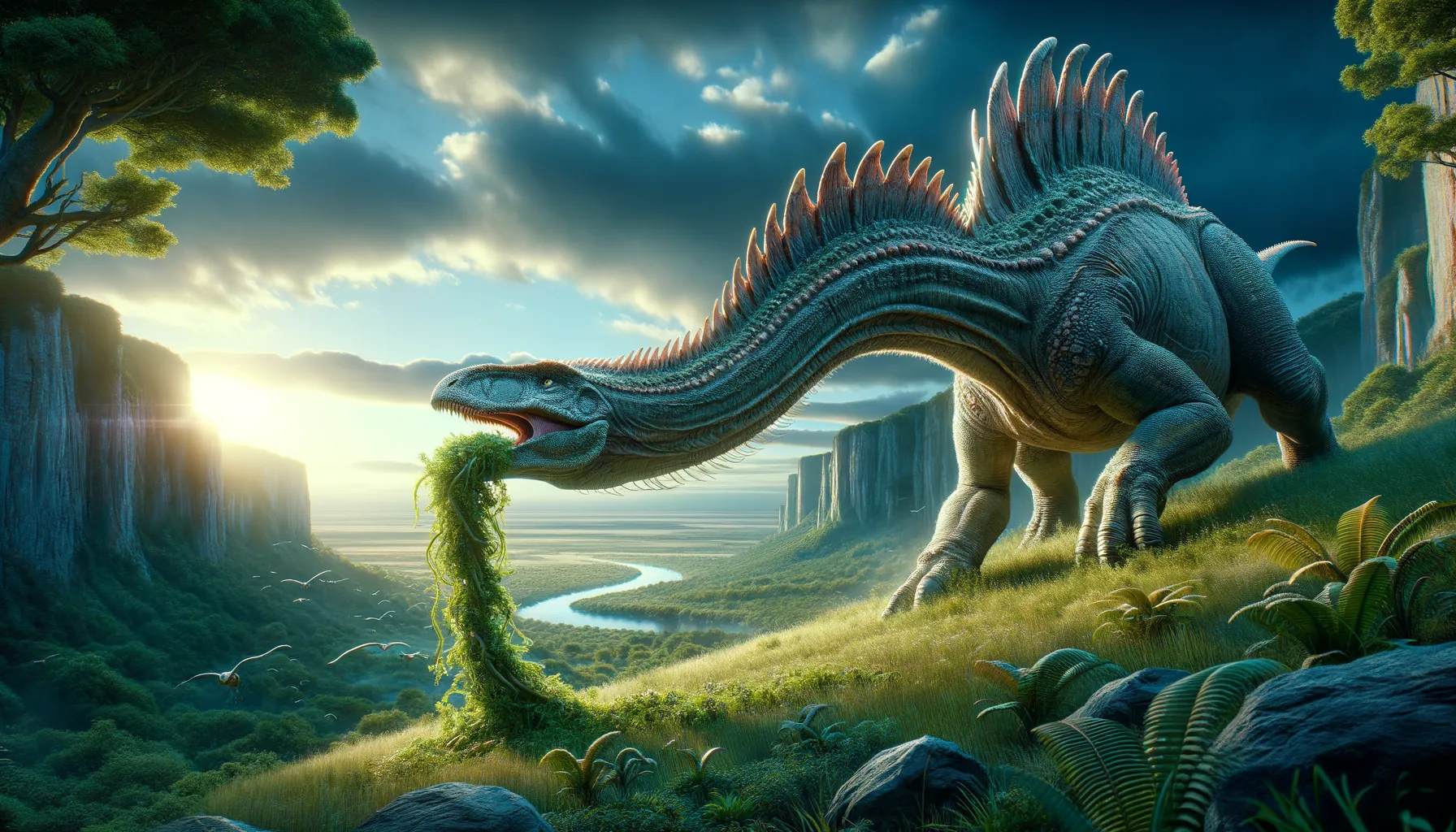
Miragaia
Stegosaur with a super-sized neck!
Period
Jurassic
Length
Around 6 meters long.
Height
About 3 meters at the shoulder.
Weight
Approximately 2 tons.
Miragaia was a fascinating long-necked stegosaur from the late Jurassic period. Known for its distinctive elongated neck, it stood out among its relatives. This herbivorous dinosaur roamed what is now Europe, specifically the region of modern-day Portugal. Its discovery added a new dimension to our understanding of stegosaur anatomy and diversity. Unlike many of its short-necked cousins, Miragaia showcased an evolutionary adaptation that might have allowed it to reach vegetation at different heights.
Diet
Miragaia was primarily a herbivore, feeding on low-lying plants and bushes. Its long neck possibly helped it reach taller vegetation, granting access to a varied diet. By consuming a wide range of plants, it could adapt to different ecological niches.
Hunting
Being a plant-eater, Miragaia didn't hunt other animals. It foraged for vegetation, likely using its elongated neck to reach food sources that others couldn't. This feeding strategy helped it thrive in its environment.
Environmental challenges
Miragaia faced environmental challenges such as changes in climate and vegetation. The Jurassic period was characterized by a variety of plant life, requiring adaptability in feeding habits. Predators also posed a threat, necessitating protective strategies. Social behavior and group living might have helped reduce predation risks.
Speed
Slow-moving due to its large size.
Lifespan
Estimated to be around 20-30 years.
First discovery
Discovered in Portugal in 2009.
Fun Facts
- Miragaia was a long-necked stegosaur, which is unusual since most stegosaurs have relatively short necks compared to other dinosaurs.
- This dinosaur lived during the Late Jurassic period, around 150 million years ago, in what is now modern-day Portugal.
- The name 'Miragaia' comes from a village near the site where its fossils were discovered, highlighting its Portuguese roots.
- Unlike its famous relative Stegosaurus, Miragaia had more neck vertebrae, giving it a strikingly long neck.
- Miragaia's elongated neck might have helped it reach higher vegetation, similar to how sauropod dinosaurs fed.
- The fossil discovery of Miragaia included both adult and juvenile specimens, providing valuable insight into its growth and development.
- Miragaia is known for being part of the stegosaur family, characterized by their distinctive back plates and tail spikes.
Growth and Development
Miragaia, like many dinosaurs, experienced a rapid growth phase during its early years. As a stegosaur, it developed its distinctive plates along its back, which might have played roles in thermoregulation and display. The elongated neck of Miragaia was an unusual trait that likely developed as a specialized adaptation.
Habitat
Miragaia lived in the lush landscapes of what is now Portugal. The environment consisted of diverse plant life, ranging from ferns to conifers. This habitat provided ample food resources despite environmental changes. The presence of rivers and other water sources likely supported its sustenance.
Interaction with other species
Miragaia coexisted with various other dinosaur species, from fellow herbivores to large predators. Its long neck may have allowed it to avoid direct competition by browsing higher foliage. Defensive features like its tail spines were likely used against predators. In group settings, Miragaia could rely on collective defense strategies.
Natural lifespan
In the wild, its lifespan was around 20-30 years.
Reproduction
Miragaia likely reproduced by laying eggs, as inferred from stegosaur relatives. Nesting behavior might have involved communal nesting grounds, providing protection for the young. Juveniles were probably nurtured within groups to increase survival chances.
Social behaviour
Miragaia is thought to have exhibited some level of social behavior. Herding could provide protection against predators and help in locating food resources. Social structures might have included hierarchical systems or cooperative behavior.
Fossil locations
The primary fossil evidence for Miragaia comes from Portugal. Its distinctive features have been preserved in the fossil record, allowing paleontologists to study its biology. These fossils provide insights into the diversity of stegosaurs in Europe during the Jurassic period.
